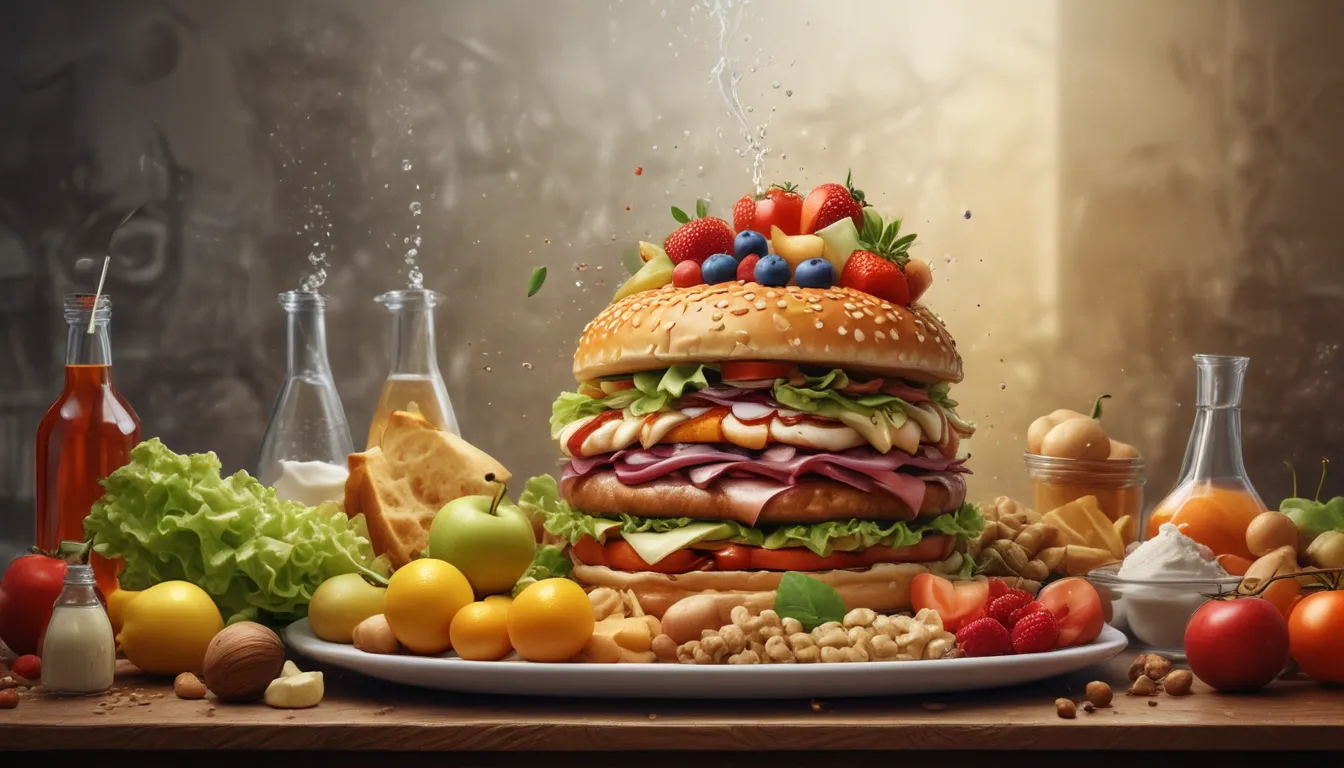A Note About Images: The images used in our articles are for illustration purposes only and may not exactly match the content. They are meant to engage readers, but the text should be relied upon for accurate information.
Welcome to the captivating world of food chemistry, where molecules and substances in our meals come to life through complex interactions. Explore the science behind the flavors, textures, and colors that make our culinary experiences unforgettable. In this article, we will discover 20 extraordinary facts that will leave you in awe of the hidden secrets that shape our meals. Join us on a scientific journey through the tantalizing realm of food chemistry, where every bite contains a world of wonders waiting to be explored.
Unraveling the Magic of Flavor: The Maillard Reaction
The Maillard Reaction is a culinary marvel that gives food its irresistible flavor and stunning color when cooked. This chemical reaction between amino acids and sugars creates the signature tastes and hues that enhance our dining experiences.
The pH Scale: Balancing Acidity and Alkalinity in Food
The pH scale determines whether foods are acidic or alkaline, with implications for taste and preservation. Foods with a pH below 7 are acidic, while those above 7 are alkaline, influencing the overall eating experience.
Enhancing Taste and Safety: The Role of Salt in Food
Salt not only brings out the flavors in food but also acts as a natural preservative by inhibiting the growth of harmful bacteria. It plays a crucial dual role in enhancing taste and ensuring food safety.
Enzymes: The Silent Heroes of Digestion
Enzymes are essential for breaking down complex food molecules into forms that are easily digestible. They play a vital role in ensuring efficient digestion and the absorption of nutrients for overall health.
The Power of Vitamins and Minerals: Building Blocks of Health
Vitamins and minerals are essential nutrients that support various physiological functions in the body. Found in a diverse range of foods, they are fundamental for maintaining health and well-being.
Creating Harmony in Mixtures: The Role of Emulsifiers
Emulsifiers stabilize mixtures of oil and water, creating smooth textures in processed foods like salad dressings and mayonnaise. They play a crucial part in achieving the desired consistency in culinary creations.
Antioxidants: Defenders Against Cellular Damage
Antioxidants found in fruits and vegetables protect against cellular damage caused by free radicals. Incorporating antioxidant-rich foods into your diet is key to promoting overall health and longevity.
The Art of Food Colorings: Enhancing Visual Appeal
Artificial food colorings influence our perception of taste by visually enhancing the appeal of food products. They are essential tools in the food industry for creating visually enticing dishes that delight consumers.
Extending Freshness: The Impact of Nitrogen in Packaging
Nitrogen gas is utilized in packaging to displace oxygen and prolong the shelf life of products such as chips, nuts, and coffee. This preservation method helps maintain product freshness for extended periods.
Unveiling the Science of Gelatin: A Versatile Food Ingredient
Gelatin, derived from collagen, is a versatile ingredient widely used in food production for creating gummy candies, gelatin desserts, and as a thickening agent. Its diverse applications showcase the ingenuity of food chemistry.
The Rise of Yeast: Crafting Light and Fluffy Baked Goods
Yeast, a microscopic fungus, plays a key role in producing carbon dioxide gas during fermentation, allowing dough to rise and imparting a light and fluffy texture to bread and other baked goods.
Preventing Browning: Techniques for Enzymatic Browning Control
Enzymatic browning, which causes fruits and vegetables to turn brown when exposed to air, can be prevented by using lemon juice or blanching. These simple techniques help preserve the visual appeal of fresh produce.
Safeguarding Quality: The Role of Food Packaging Materials
The choice of packaging materials can impact the quality and safety of food products, as certain materials may leach harmful chemicals over time. Selecting the right packaging is crucial for maintaining food integrity.
Sweetening Without Calories: Exploring Artificial Sweeteners
Artificial sweeteners like aspartame and sucralose provide sweetness without added calories, making them popular alternatives for individuals monitoring their sugar intake. These substitutes offer a guilt-free way to enjoy sweetness.
Fermentation: A Natural Alchemy for Culinary Creations
Fermentation is a natural process that converts sugars into alcohol, acids, or gases, giving rise to various foods and beverages like yogurt, pickles, cheese, beer, and wine. Its transformative power adds depth and complexity to culinary delights.
Texture Matters: Influencing Mouthfeel Through Temperature and Moisture
Temperature and moisture play critical roles in determining the texture of food, affecting factors such as crispness, tenderness, and overall mouthfeel. Understanding these elements is key to crafting appealing dishes.
Unraveling the Mystery of Food Allergies: Immune System Reactions
Food allergies stem from the immune system’s reaction to specific proteins in food, leading to a range of symptoms from mild discomfort to severe allergic reactions. Identifying allergens is crucial for managing allergies effectively.
Preserving Traditions: The Evolution of Food Preservation
Throughout history, humans have employed diverse methods like drying, smoking, salting, and fermenting to preserve food. These techniques have preserved culinary traditions and enabled us to enjoy a rich tapestry of flavors year-round.
Exploring the World of Food Chemistry
Food chemistry is a captivating realm that unveils the science behind the meals we savor. From the molecular composition of ingredients to the intricate reactions that shape our culinary experiences, this field plays a pivotal role in ensuring the quality and nutritional value of the food we consume. By delving into the extraordinary facts of food chemistry, we deepen our appreciation for the scientific marvels that underpin our everyday meals.
Delve Deeper into the Science Behind Your Plate
Embark on a journey through the remarkable world of food chemistry, where every meal is a masterpiece of molecular interactions and scientific insights. Explore the secrets behind your favorite flavors, textures, and colors, and gain a profound understanding of the culinary alchemy that transforms ingredients into delectable dishes.
Unlock the mysteries of food chemistry and unravel the hidden gems that make our meals truly extraordinary. As you venture into this fascinating field, you’ll develop a newfound appreciation for the intricate processes that shape the food we love. Join us in celebrating the wonders of food chemistry and let each meal be a testament to the magic that happens when science meets culinary artistry.






